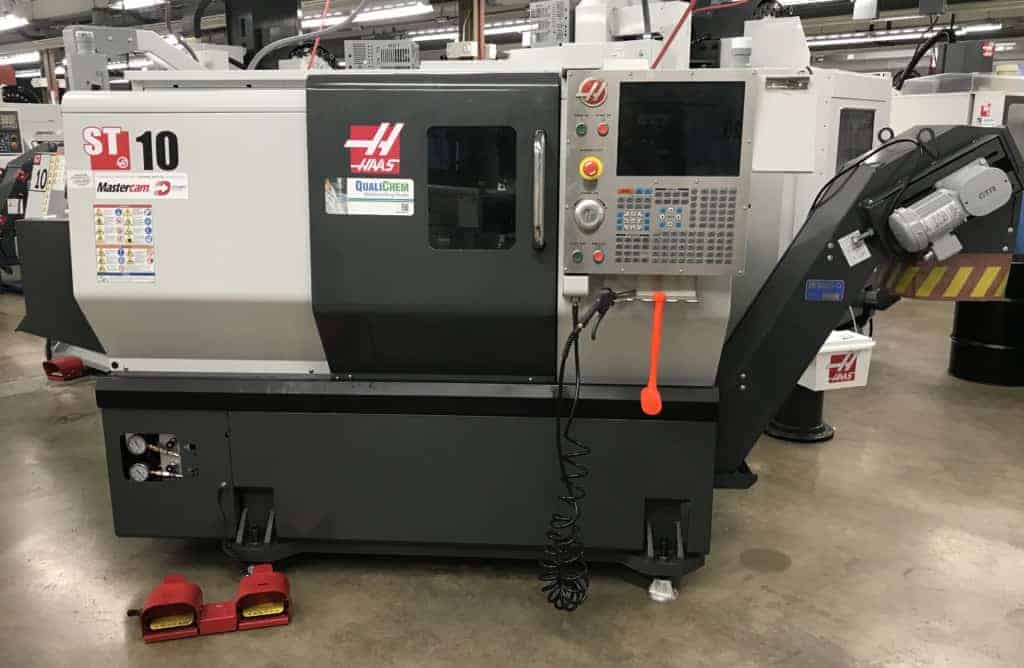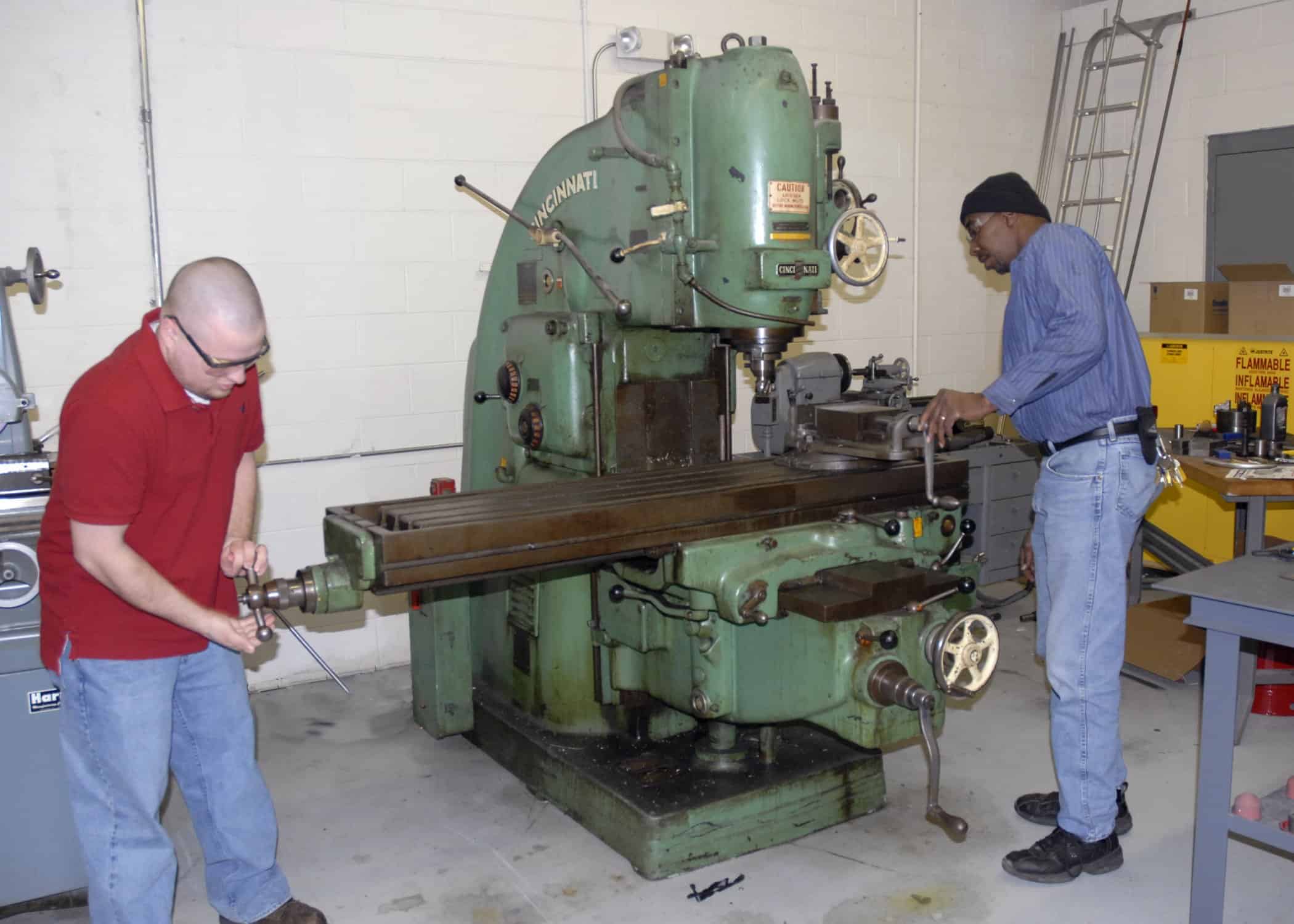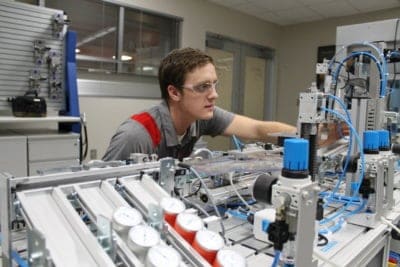On an early spring day in 2014, several NC Community College System Office leaders were touring Craven Community College’s machining labs when a member of the tour group noticed a drab, gray lathe sitting in a corner. Mounted to the side of the lathe was a plaque that read, “This Machine Conforms To The Orders Of The War Production Board.” Surprisingly, the lathe is a veteran of World War II and rumored to have served aboard the USS North Carolina.
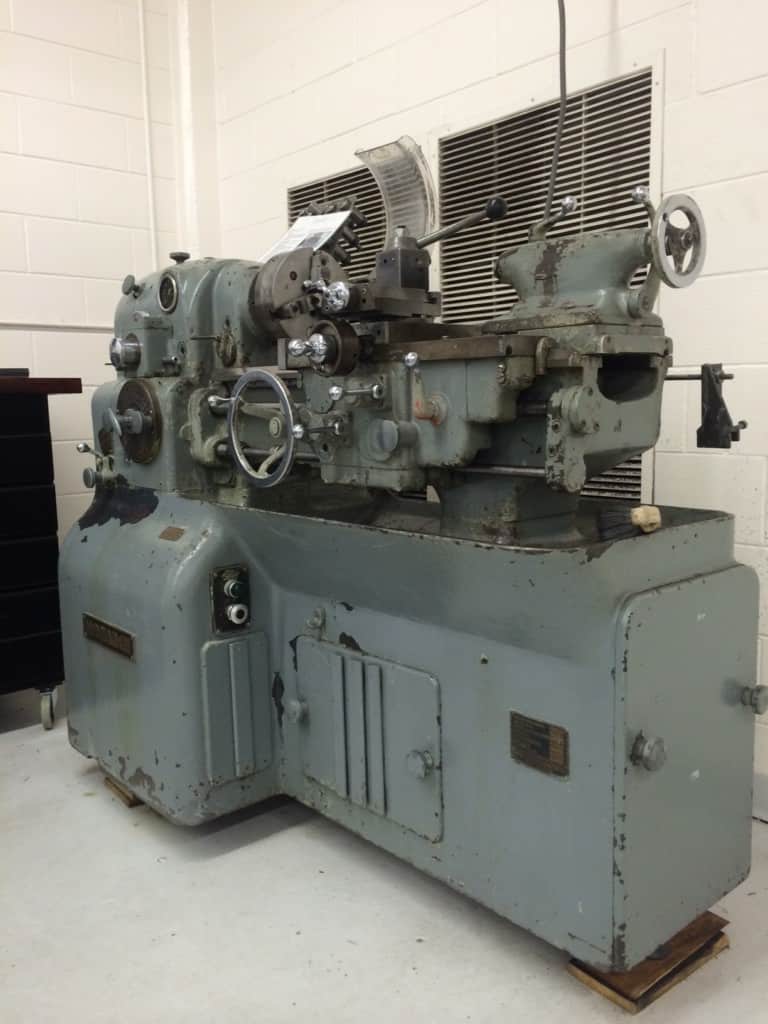

Where and how the lathe officially served is not known, but this machine represents five tales that call for discussion. The first story resides within the history and events this one machine experienced while serving to make parts to repair or build ships and tanks for the war effort. Imagine if this lathe did serve aboard the USS North Carolina, making or repairing damaged parts while the ship was at sea in military action during World War II. What tales would it tell of the battleship crew’s bravery or disaster inflicted by submarine torpedo attacks?
Like the many war veterans that returned home looking to enter the workforce, the gray lathe found its way to one of North Carolina’s technical education centers, the precursor to the NC Community College System. Moving from one important mission to another, serving in its second tour of duty, the lathe trained and helped thousands of students develop the skills necessary to land a good job with manufacturing or metalworking companies. The lathe continues in this important role today, a role that is at the center of four other narratives about equipment, training and the community colleges.
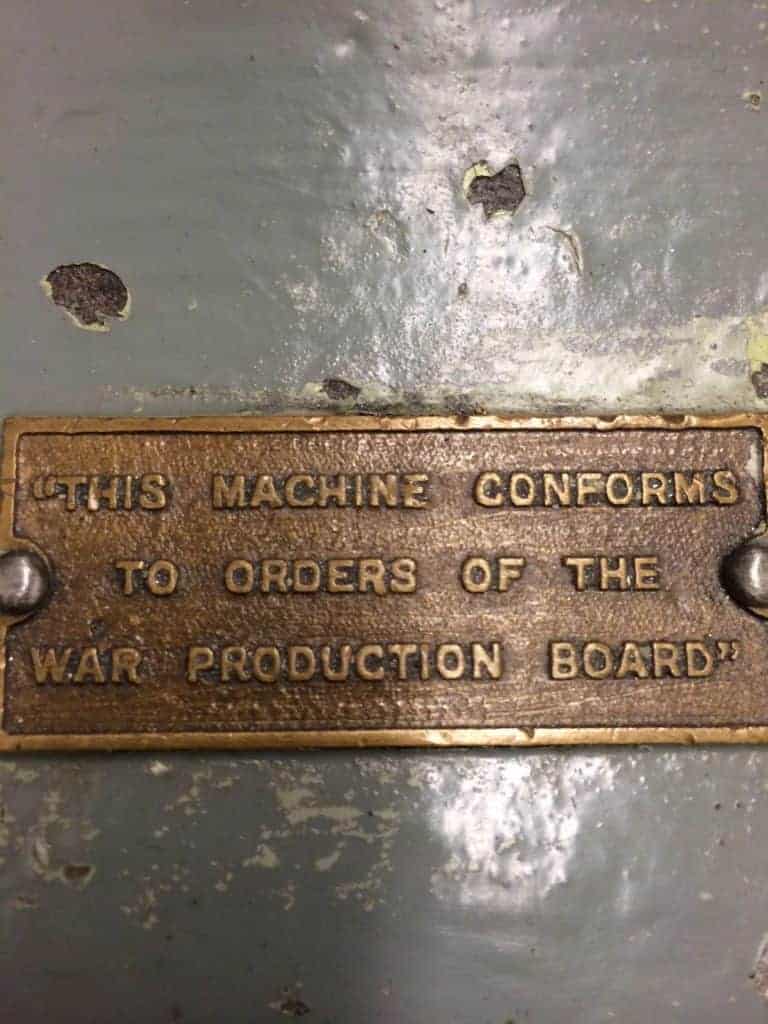

Equipment conundrum
The North Carolina Community College System receives an annual state appropriation of more than $1 billion. However, a relatively small amount of the annual budget goes for equipment (roughly $49 million system-wide). The small amount for equipment purchases is not because the community college system does not think cutting-edge equipment is important; it has more to do with the cost of running colleges, from utilities to costs of services, marketing and maintenance.
Equipment tends to fall below these critical areas in priority of funding. This is where our World War II veteran comes into the story. Colleges have had to make do with equipment that in many cases is older than the students using the equipment.
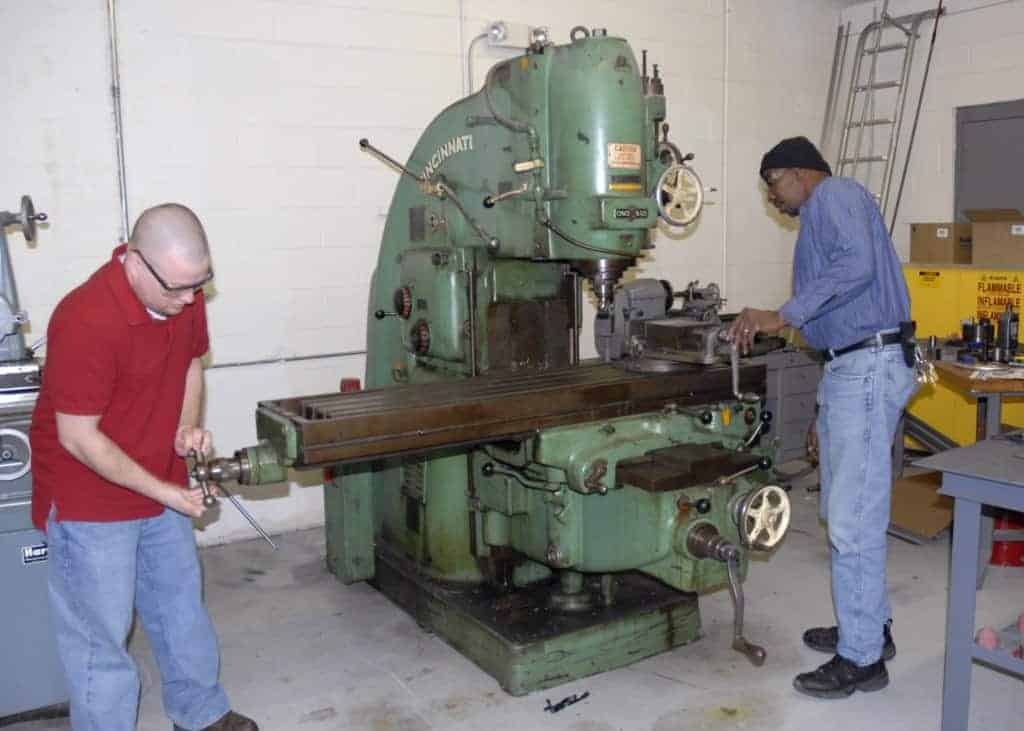

Beg, borrow and scrounge
In the 1990s, Asheville-Buncombe Technical Community College’s mechanical engineering technology program did not have the budget to afford robotic equipment for new automation courses. So, faculty members in the department built their own automated equipment from miscellaneous parts donated by a local manufacturer. AB Tech’s mechanical engineering technology program is not alone among the many programs in North Carolina’s 58 community colleges.
The staff and faculty at the community colleges are experts at using what they can scrounge, borrow and renovate. Another example is the drab, gray lathe and how Craven Community College uses the veteran and maintains it for the benefit of their students.
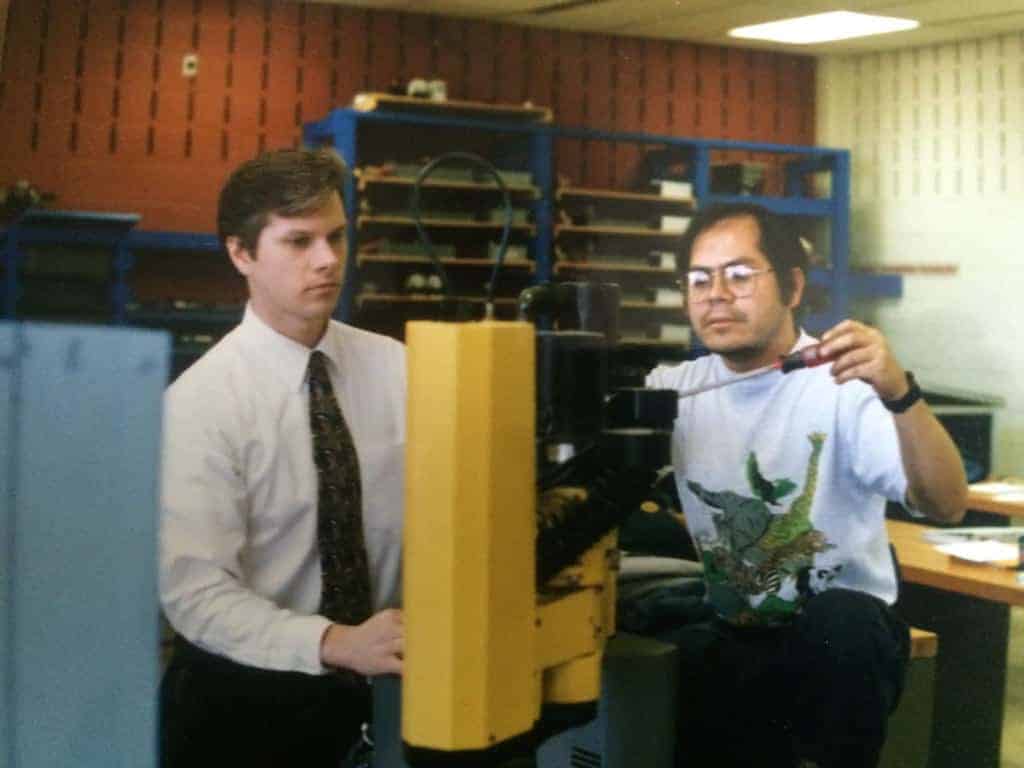

Future-focused or focused skills
The truly future-focused, cutting-edge lathes are controlled with computer-numeric controls, have slant bed capability, and use laser-technology for high-precision machining. Most community colleges in North Carolina can only afford such machines through relationships with manufacturers (Haas Technical Education Centers) or local industry partnerships that give new equipment or offer grants. However, one thing is certain — when it comes to occupational training and education, fundamental skills never go out-of-date.
Lathes with manual controls will always be included in a rigorous metalworking curriculum. Furthermore, in periods of low unemployment, many companies struggle to find talent and are willing to conduct their own internal training on new or complex technology. The challenge during periods of low unemployment is finding applicants who have critical employability skills such as critical thinking, problem solving, work ethic, grit, resilience and teamwork.
The World War II veteran machine is more than capable of providing students with the basics of manual lathe turning. Additionally, many colleges use student-group projects, and machines like the senior citizen lathe become tools to teach teamwork, problem solving, critical thinking and work ethic.
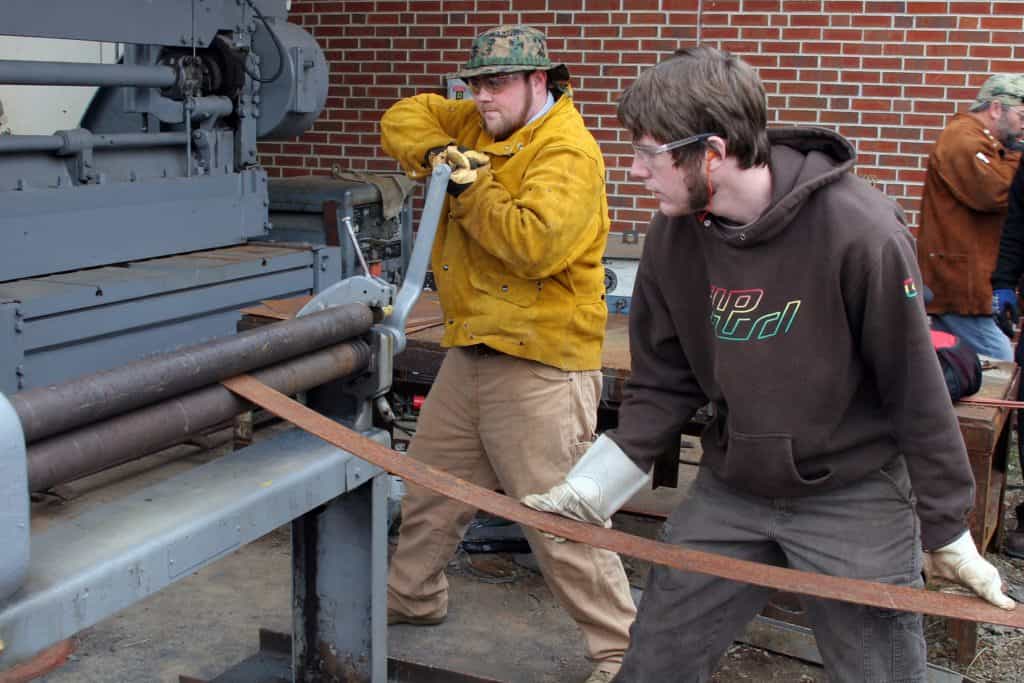

Image, image, image
Image and perception are critical factors that impact students’ interest in many sector-related career and education pathways such as manufacturing, construction, public safety and transportation. The manufacturing industry has spent a great deal of energy and time attempting to change the perception that manufacturing is dirty work, low pay and only for men.
A 2017 survey by the Manufacturing Institute and Deloitte showed that public perceptions of manufacturing are improving; 67 percent of those surveyed believe manufacturing jobs are interesting and rewarding. However, parents are still reluctant to encourage their children to go into a manufacturing pathway, partly because of the image issue surrounding community colleges.
The public perception exists that one has failed if they attend a community college instead of a university. This is partly due to the appearance of community college facilities and equipment. The lathe at Craven Community College highlights this issue of perception and image. Parents and students may question the logic of attending a community college ($76 per credit hour) to be trained on a 70-year-old piece of equipment when private for-profit training providers (hundreds more per credit hour) market leading technology and equipment.
This perception, even with the $76 per credit hour tuition advantage of North Carolina community colleges versus hundreds more per credit hour at for-profit training providers, is one of the greatest challenges to recruiting students. Community colleges across the country sacrifice entire institution-wide equipment budgets just to buy a single, expensive future-focused machine or technology.
Community Colleges constantly fight to overcome many barriers, including budget shortfalls, negative public perceptions, aging equipment and classrooms, and lab space shortages, to name just a few. However, for those who support and have spent time at a community college, they understand and recognize that the colleges are resourceful, creative, inventive, effective and represent a great return on every dollar of investment. Unfortunately, many of the budget-related issues will never subside, and hand-me-down equipment, just like the World War II veteran lathe, will always be useful, and in many cases, welcomed at North Carolina community colleges.
